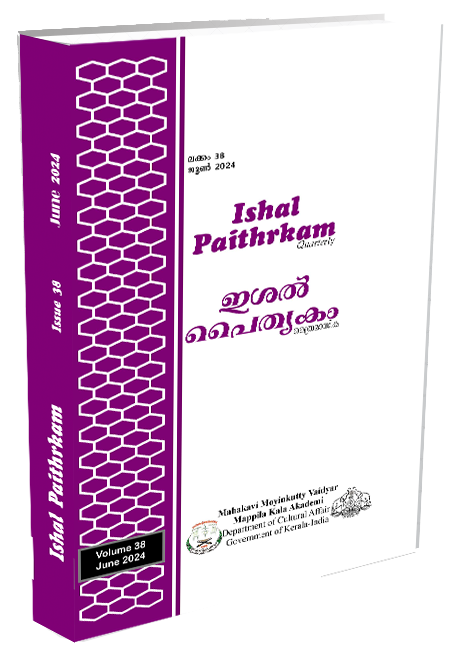Gendered Dis-abilities: A Probe into the Intersections of Menstruation, Disabilityand the Discourse of Discrimination
Abstract
Turning an inquisitive lens into the construction of meanings and associations characterising the dual experiences of menstruation and disability reveals the culture of stigma, shame and marginalisation that surrounds them. Grounded on the possible interdisciplinary link between the emerging academic fields of Critical Menstruation Studies and Disability Studies, this paper attempts to critique the ways in which the experiences of menstruators with disabilities are marginalised in our cultural milieu, especially in the Indian context. The study aims to bring to light how even the contemporary menstrual narratives of empowerment and de-stigmatisation are non-inclusive of menstruators with disabilities whose voices remain unheard. Along with the theoretical inferences drawn from Critical Menstruation Studies and Critical Disability Studies, the paper will also make use of the concept of Intersectionality as an analytical tool to address the questions guiding the study. The paper intends to delve into the varied vantage points of ‘the disabled-menstruator intersectionality’ to call attention to the absence of representations in the mainstream menstrual narrative and advocate for more inclusive conversations.
Downloads
References
Bobel, C. (2010). New Blood: Third-wave feminism and the politics of menstruation. Rutgers University Press.
Bobel, C., Winkler, I., Fahs, B., Hasson, K. A., Kissling, E. A., Roberts, T.-A., Steele, L., & Goldblatt, B. (2020). The Human Rights of Women and Girls with Disabilities: Sterilization and Other Coercive Responses to Menstruation. In The Palgrave Handbook of Critical Menstruation Studies. essay, Palgrave Macmillan.
Buder, S., & Perry, R. (2021, November 5). The social model of disability explained. Social Creatures. https://www.thesocialcreatures.org/thecreaturetimes/the-social-model-of-disability
Bunga, A., & Matthew, T. (2020, March 11). Women with disabilities and forced sterilisation in India. Feminism in India. https://feminisminindia.com/2020/03/12/women-disabilities-forced-sterilisation-india/
Collins, H. P., & Bilge, S. (2021). Intersectionality. Polity Press.
Guidance note: Menstrual Health and Hygiene for Girls and ... - UNICEF. (n.d.). https://www.unicef.org/media/98881/file/MHH-Disabilities-Guidance-Note-ENG.pdf
Laird, A. (2019). Heavy flow: Breaking the Curse of Menstruation. Dundurn.
Linton, S. (2010). Claiming disability: Knowledge and identity. New York University Press.
Nair, P. (2021). Menstruation: An Ableist Narrative. Columbia Journal of Gender and Law, 41(1), 180–89. https://doi.org/10.52214/cjgl.v41i1.8833
Rao, S. J. (2019, February 19). “I want a world that sees disabled people as sexual beings and prospective partners”: Director Ram. Silverscreen India. https://silverscreenindia.com/movies/features/i-want-a-world-that-sees-disabled-people-as-sexual-beings-and-prospective-partners-director-ram/
Additional Files
Published
Issue
Section
License
Copyright (c) 2025 ISHAL PAITHRKAM

This work is licensed under a Creative Commons Attribution-NoDerivatives 4.0 International License.

